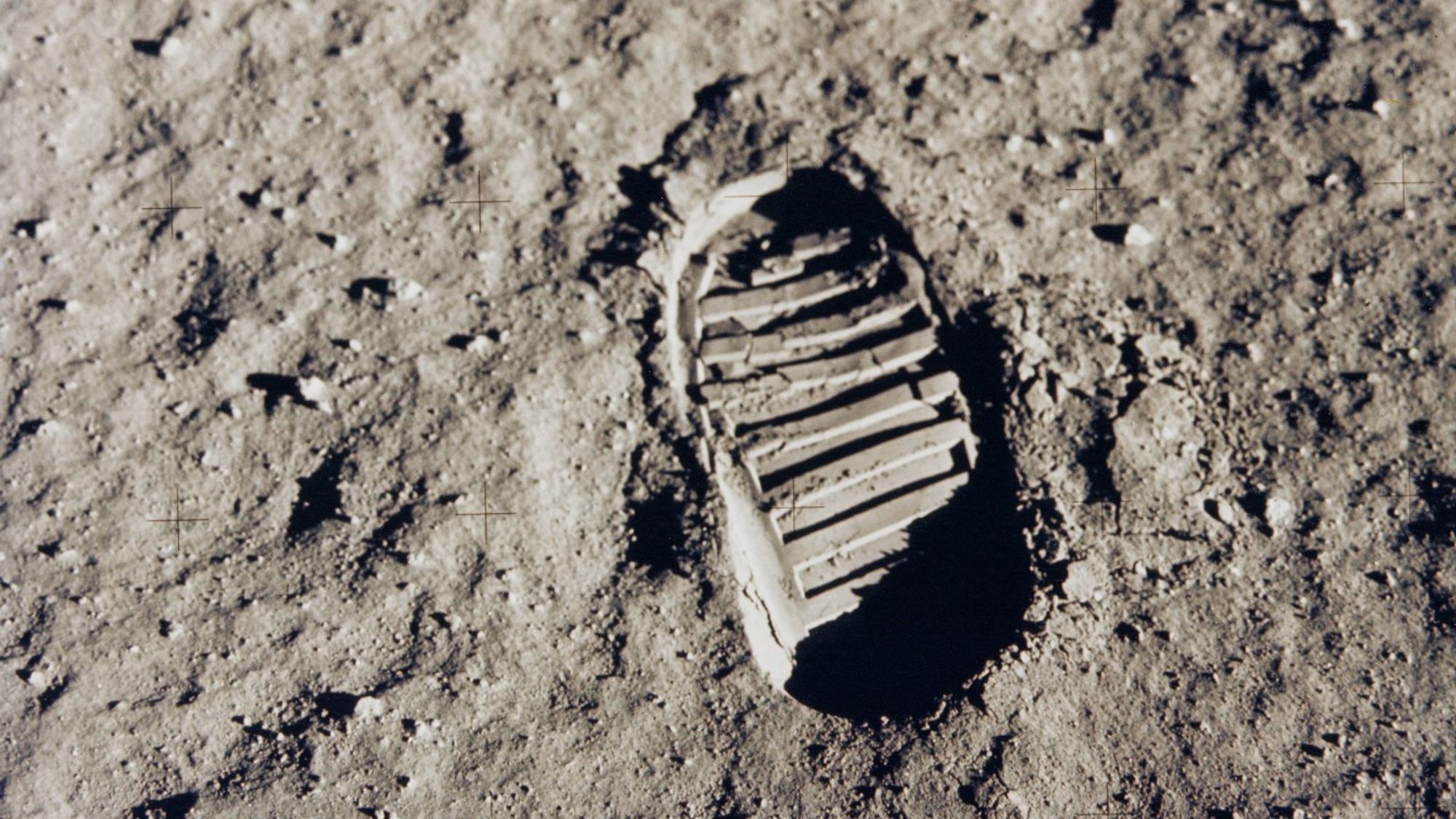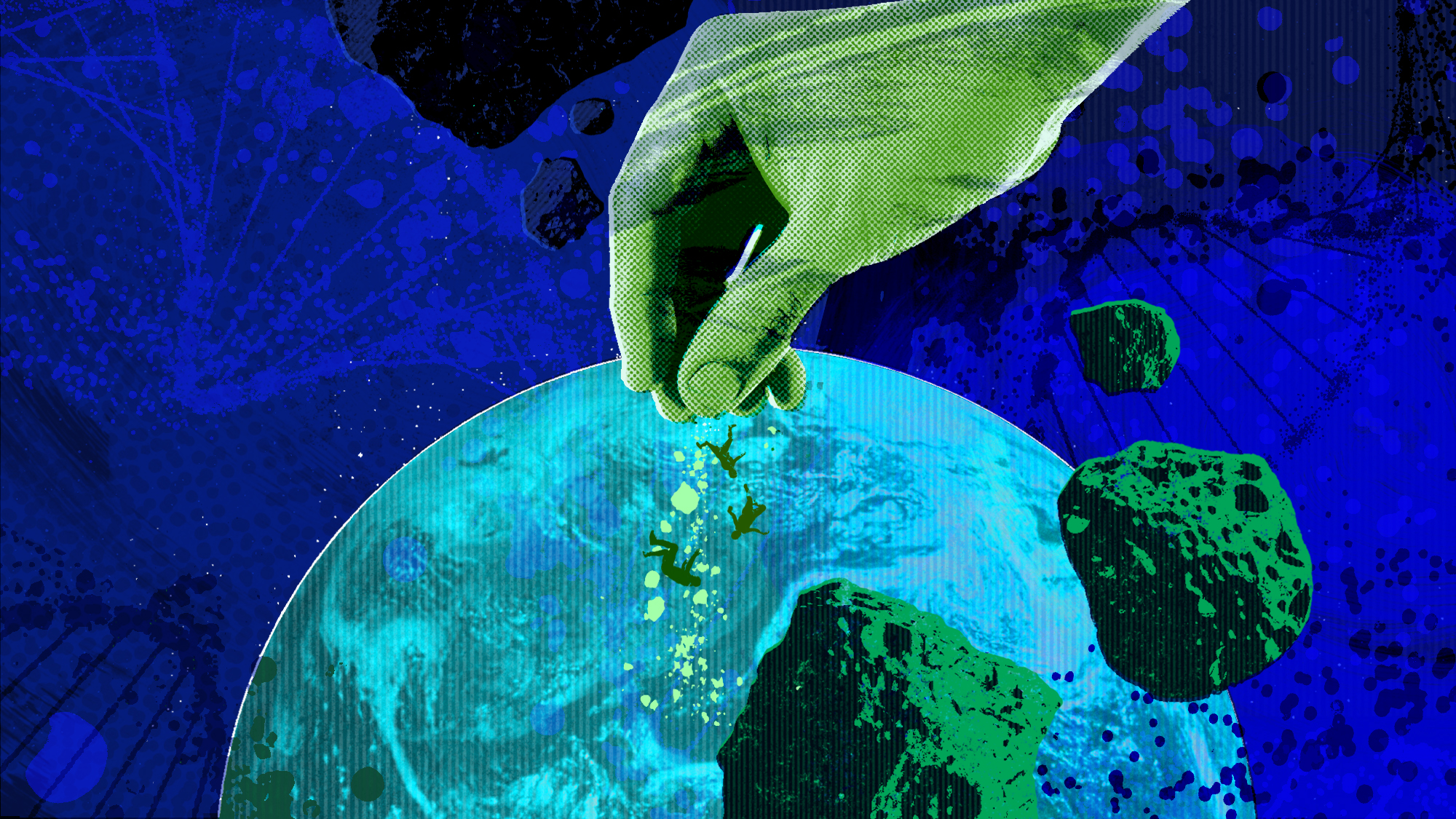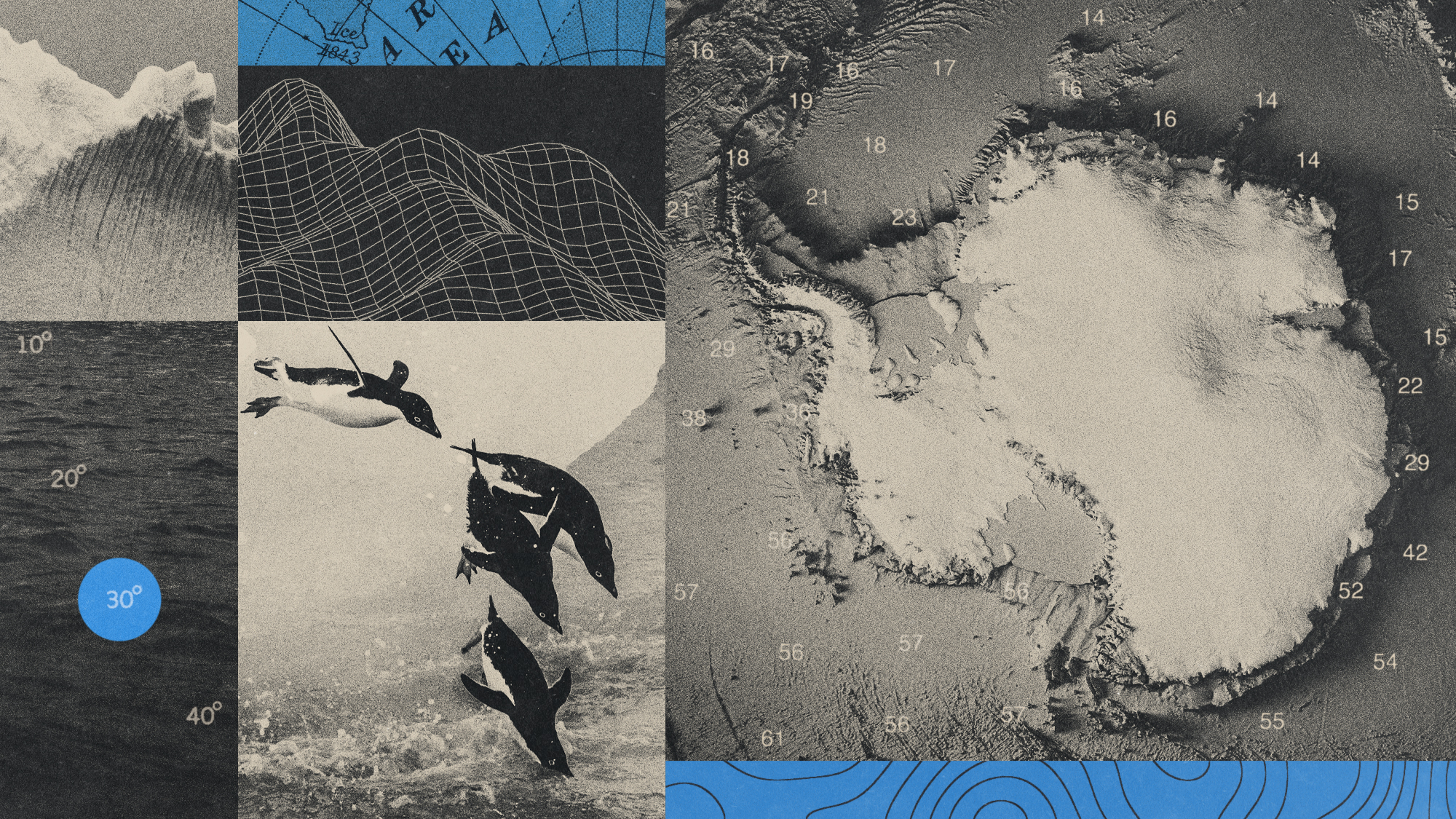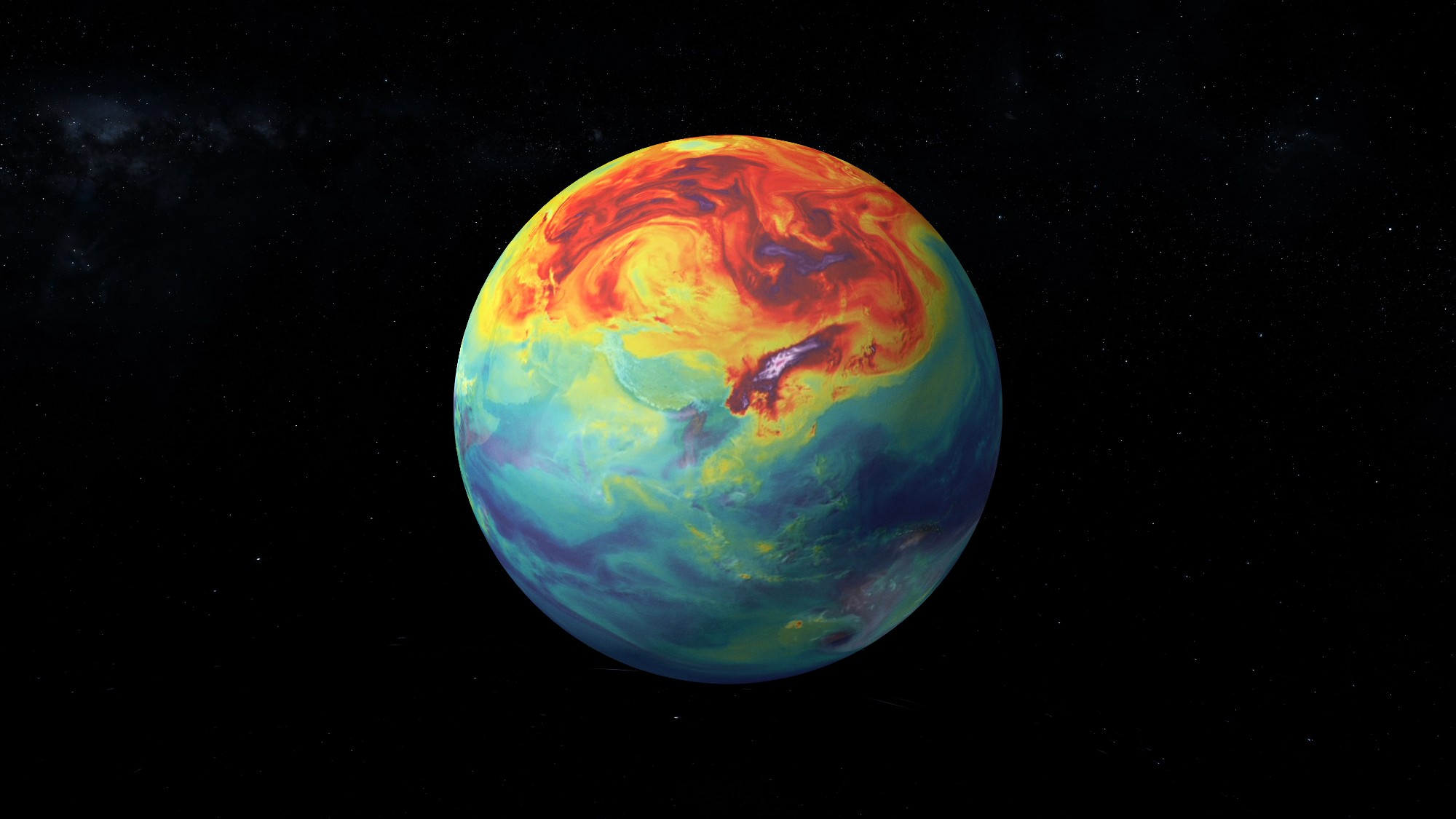The Moon's man-made problems
Scientists warn of advent of 'Lunar Anthropocene' era as human visits alter the Moon's surface

Humanity is now the dominant force influencing the Moon's future, according to scientists calling for a formal declaration of a new geological epoch called the "Lunar Anthropocene".
In a report in the journal Nature Geoscience, the team of American geologists and anthropologists said that human debris on the lunar surface includes "discarded and abandoned spacecraft components, bags of human excreta, scientific equipment and other objects [such as] flags, golf balls, photographs and religious texts".
More than 100 spacecraft have been sent to the Moon since 1959, when a Soviet probe became the "first man-made object to disturb the lunar surface", said The Times's science reporter Kaya Burgess. And experts fear that humans are playing an increasingly "big role in shaping its landscape".
The Week
Escape your echo chamber. Get the facts behind the news, plus analysis from multiple perspectives.

Sign up for The Week's Free Newsletters
From our morning news briefing to a weekly Good News Newsletter, get the best of The Week delivered directly to your inbox.
From our morning news briefing to a weekly Good News Newsletter, get the best of The Week delivered directly to your inbox.
How much impact are humans having?
Plenty, according to scientists. In their report in Nature Geoscience, scientists from the University of Kansas say that the effects of spacecraft landings, lunar rovers and other human activity on the Moon's surface are becoming more impactful than natural processes such as meteoroid impacts.
With lunar missions set to "ramp up", said New Scientist, the experts claim that just like Earth, the Moon is entering an anthropocene – a new planetory era in which human activity has overtaken natural forces as the main cause of changes to the environment and the climate.
The scientists argue that so great is this impact, lunar "national parks" should be created to preserve areas for scientific study.
To date, people have caused "surface disturbances" in at least 59 locations on the Moon's surface, the magazine reported. And the frequency of human visits is increasing, with India this year becoming the fourth country to make a soft landing on the Moon, and a "range of national and private missions" planned for the near future.
A free daily email with the biggest news stories of the day – and the best features from TheWeek.com
Does it matter?
The scientists hope that by officially declaring the advent of the Lunar Anthropocene, agencies and governments conducting work on its surface "will better appreciate the importance of managing the impact", said science writer Matthew Agius in Cosmos magazine.
According to study co-author Justin Holcomb, a postdoctoral researcher with the Kansas Geological Survey, "our goal is to dispel the lunar-static myth and emphasise the importance of our impact, not only in the past but ongoing and in the future".
University College London astrophysicist Ingo Waldmann agreed the Moon has entered its version of Earth's Anthropocene age. Natural changes to lunar geology are "extremely slow", he told New Scientist, with an asteroid impact every couple of million years, but not many other big events.
"Just us walking on it has a bigger environmental impact than anything that would happen to the Moon in hundreds of thousands of years," said Waldmann.
What next?
The unofficial motto of the US National Park Service here on Earth is "take only photographs, leave only footprints", noted Popular Science's Laura Baisas. A growing number of experts now "believe that a similar mindset should apply to the Moon".
The Moon is extraordinarily vulnerable to human activity, said Newsweek's science reporter Aristos Georgiou. Earth's sole natural satellite "only has a very thin and tenuous atmosphere, known as an exosphere, composed of dust and gas, which is susceptible to exhaust gases".
Given this vulnerability, Holcomb and his fellow report co-authors insist that "future missions must consider mitigating deleterious effects on lunar environments".
"We aim to initiate discussions about our impact on the lunar surface before it's too late," added Holcomb, who predicted that as the space race accelerates, the lunar landscape "will be entirely different in 50 years".
Arion McNicoll is a freelance writer at The Week Digital and was previously the UK website’s editor. He has also held senior editorial roles at CNN, The Times and The Sunday Times. Along with his writing work, he co-hosts “Today in History with The Retrospectors”, Rethink Audio’s flagship daily podcast, and is a regular panellist (and occasional stand-in host) on “The Week Unwrapped”. He is also a judge for The Publisher Podcast Awards.
-
 7 bars with comforting cocktails and great hospitality
7 bars with comforting cocktails and great hospitalitythe week recommends Winter is a fine time for going out and drinking up
-
 7 recipes that meet you wherever you are during winter
7 recipes that meet you wherever you are during winterthe week recommends Low-key January and decadent holiday eating are all accounted for
-
 Nine best TV shows of the year
Nine best TV shows of the yearThe Week Recommends From Adolescence to Amandaland
-
 How climate change is affecting Christmas
How climate change is affecting ChristmasThe Explainer There may be a slim chance of future white Christmases
-
 Blue Origin launches Mars probes in NASA debut
Blue Origin launches Mars probes in NASA debutSpeed Read The New Glenn rocket is carrying small twin spacecraft toward Mars as part of NASA’s Escapade mission
-
 ‘The Big Crunch’: why science is divided over the future of the universe
‘The Big Crunch’: why science is divided over the future of the universeThe Explainer New study upends the prevailing theory about dark matter and says it is weakening
-
 The moon is rusting
The moon is rustingUnder the radar The Earth is likely to blame
-
 Panspermia: the theory that life was sent to Earth by aliens
Panspermia: the theory that life was sent to Earth by aliensUnder The Radar New findings have resurfaced an old, controversial idea
-
 Africa could become the next frontier for space programs
Africa could become the next frontier for space programsThe Explainer China and the US are both working on space applications for Africa
-
 Canyons under the Antarctic have deep impacts
Canyons under the Antarctic have deep impactsUnder the radar Submarine canyons could be affecting the climate more than previously thought
-
 NASA is moving away from tracking climate change
NASA is moving away from tracking climate changeThe Explainer Climate missions could be going dark